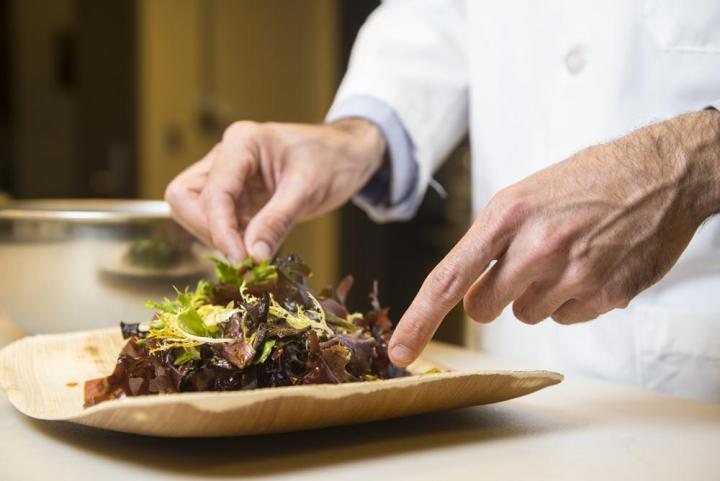
If only we could contact Ron Swanson for comment.
OSU researcher Chris Langdon spent the last 15 years creating and growing this particular strain of seaweed — which goes by the name dulse — at the Hatfield Marine Science Center in Newport, Oregon. While basic versions of dulse grown in habitats along the Pacific and Atlantic coasts, Langdon’s strain grows in bubbling containers of seawater directly outside his office at the marine center. Utilizing a water recirculation system, it grows considerably faster than wild dulse and allows Langdon to cultivate around 20-30 pounds of it each week.
“Theoretically you could create an industry in eastern Oregon almost as easily as you could along the coast with a bit of supplementation,” Langdon tells OSU, “you just need a modest amount of seawater and some sunshine.”
Originally developed as a super-food to feed abalone, Langdon’s view on the production altered after speaking with an OSU College of Business faculty member named Chuck Toombs. He recognized the cultivated dulse on a visit to Langdon’s office and realized its inherent potential as a new industry for Oregon. Toombs instantly took the strain to Oregon State’s Food Innovation Center in Portland, Oregon, and began working with a team to create foods — like rice crackers and salad dressing — using dulse as the primary ingredient.
After many successful trials, the Oregon Department of Agriculture decided to award the team a grant for further research of dulse as a specialty crop. The grant allowed the researchers to employ the services of famous research chef Jason Ball who’d previously helped chefs find better uses for local ingredients at the University of Copenhagen’s Nordic Food Lab. Because of the fact fresh, high-quality seaweed is something of a rare commodity, Ball jumped at the chance to work with Langdon’s strain.
The research conducted by Oregon State University and Ball piqued the interest of several chefs around the Portland, Oregon area, with many believing dulse boasts a unique potential in its raw form, as well as a basic ingredient. In testing out various culinary options for the seaweed, Ball developed 14 different prototype products like recipes for burgers and even a batch of dulse beer. After conducting these trials, Ball narrowed further research down to just five foods — trail mix, salad dressing, rice crackers, sesame seed chips, and smoked dulse popcorn peanut brittle — with hopes of bringing a few to market.
Though little analysis exists about a potential commercial enterprise here in the States, dulse has long served as a nutritional supplement in Europe, albeit as a vastly different strain which doesn’t taste like bacon. To help discover its potential domestic popularity, several of Toombs graduate MBA students started crafting marketing plans aimed at developing larger scale production, as well a lineup of specialty foods.
Our advice would be to just tell people it’s healthy and tastes like bacon. What more do they need to know?




